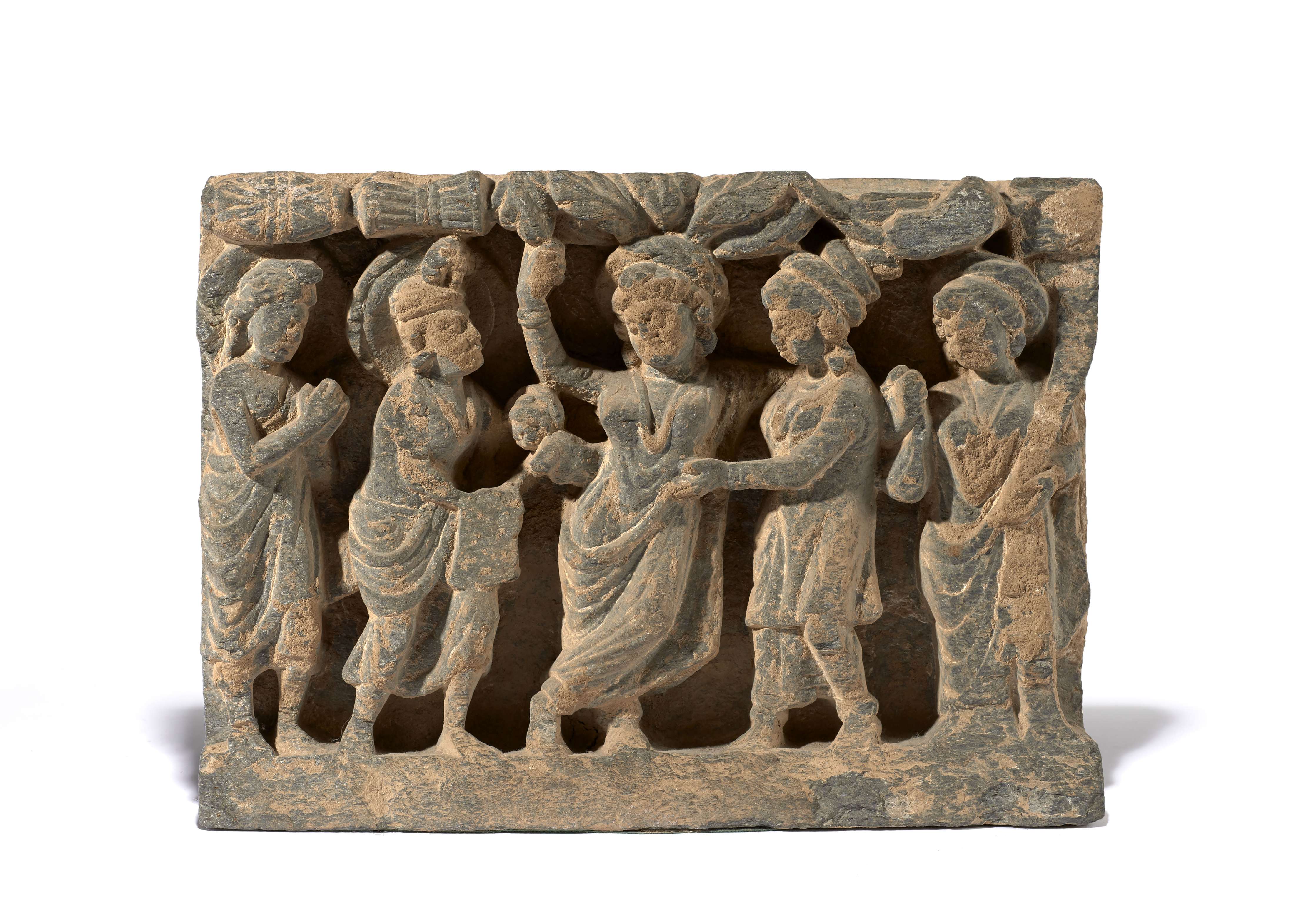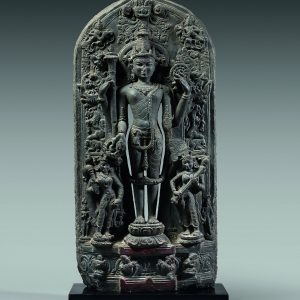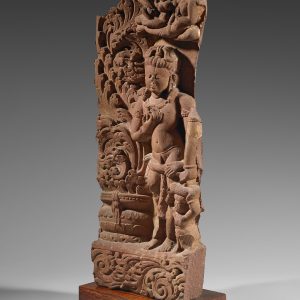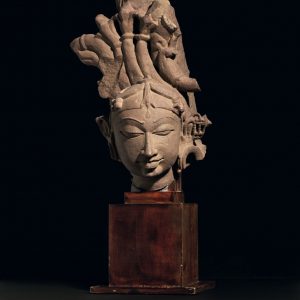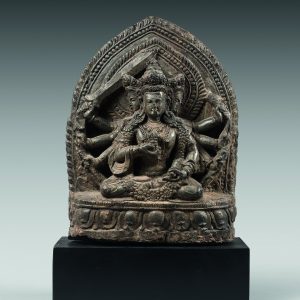The birth of Buddha
Schist
Ancient region of Gandhara (Northern Pakistan)
2nd – 3rd century
L. 27 cm
Description
The lovely scene depicts the Birth of Buddha Śākyamuni, the historical Buddha. In the center stands Queen Māyā, gracefully raising her right arm and grasping a branch of the śāl tree, in Lumbinī, according the classical iconography. From her right side comes out the future Buddha, about to be wrapped in a cloth by Indra. On the right, Mahāprajāpatī offers support to her sister, and gently touches her stomach, as if to relieve her. On both sides, an assistant and a male deity praying complete the image. The scene is organized with a lot of naturalness, emphasizing a clear narration, and we can only admire the fluidity of lines and movements.
The elegant pose of Māyā, slightly swaying and the ankles crossed, alludes to the traditional Indian representations of the fertility goddesses. The vigorous drapes inherited from Hellenistic art, the typically Indian elaborate headdresses, the foliage and even the musical instruments that evoke the celestial joy accompanying this happy event, all these elements are finely carved, with precision and naturalism.
A wonderful characteristic of Gandhāran art is this dual influence of classical Mediterranean art and Indian art, that lends this work charm by giving it a strong aesthetic feeling and immense historic value.
Many comparable examples exist: a frieze belongs to the collections of the Metropolitan Museum of New York (1987.417.1), another one is kept at the Art Institute of Chicago (23.315) and the Victoria & Albert Museum of London also has several similar pieces – nevertheless smaller and in a less good condition (1880.62; 1880.173; 1889.1016.3).
Provenance: Private collection, Paris, built in the 1960s.

